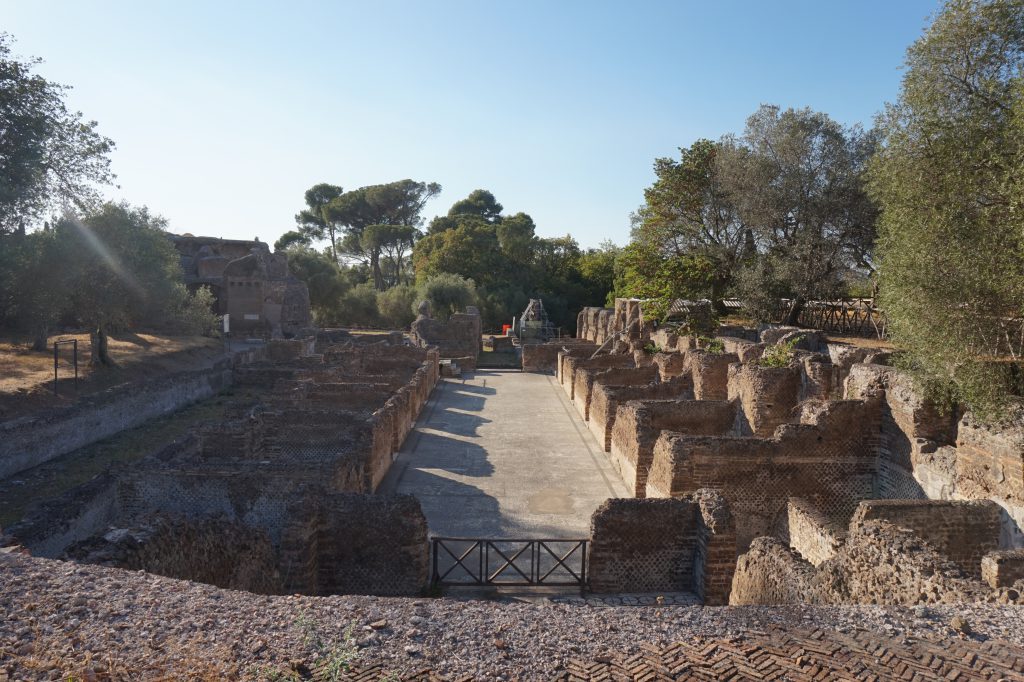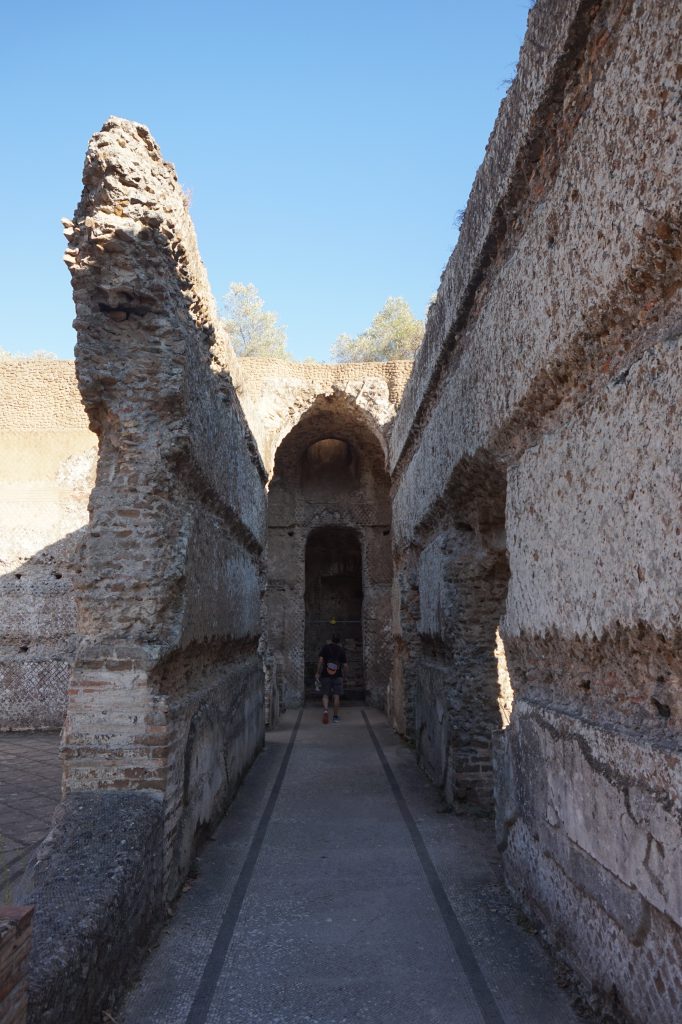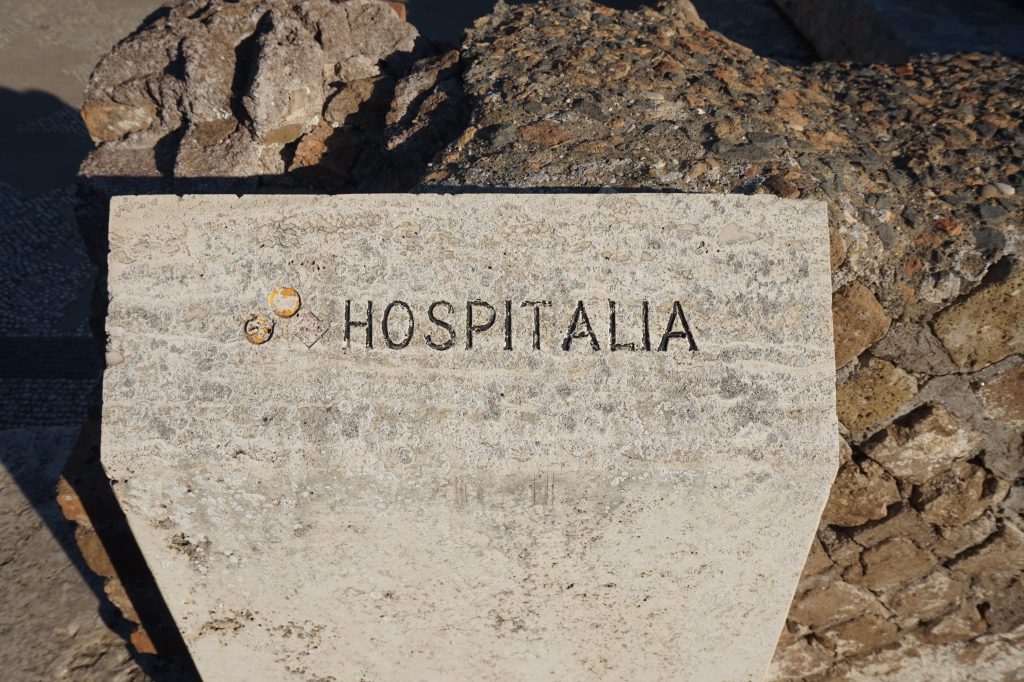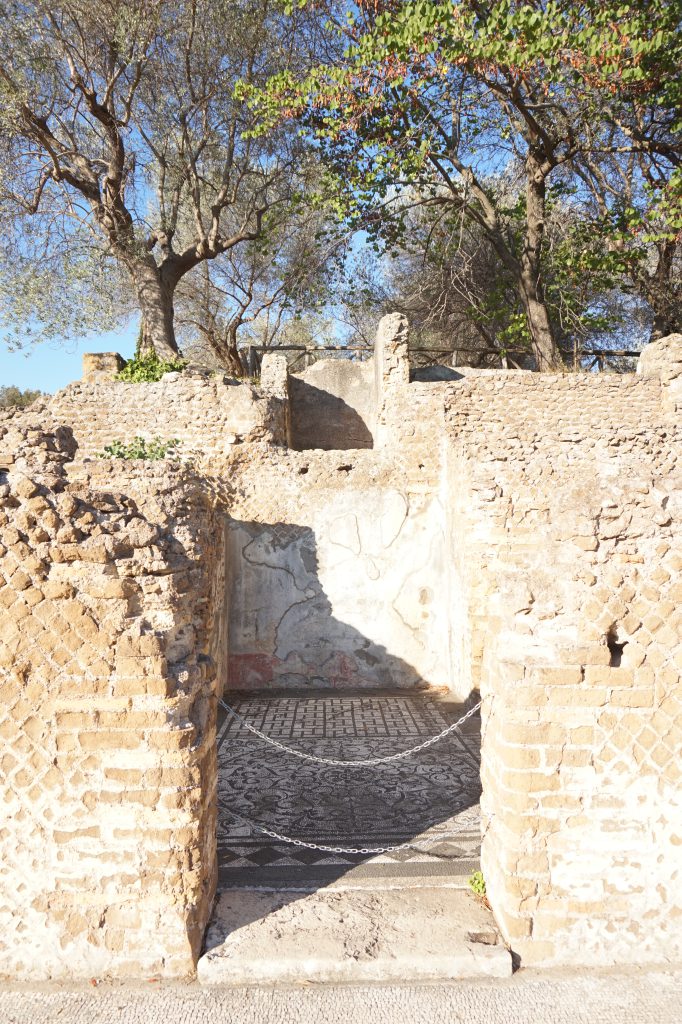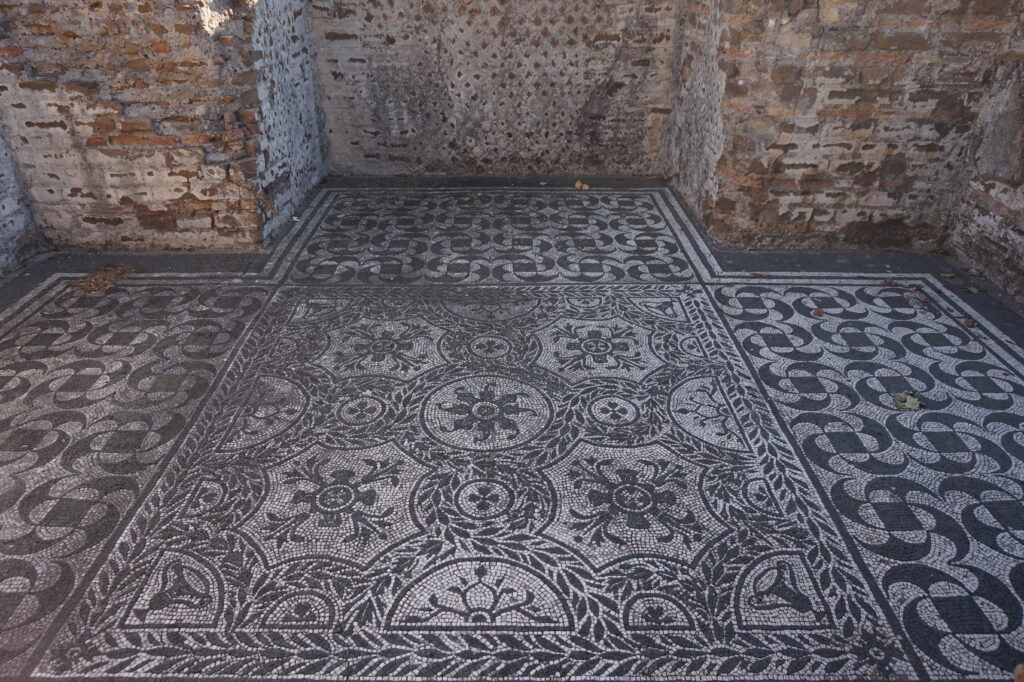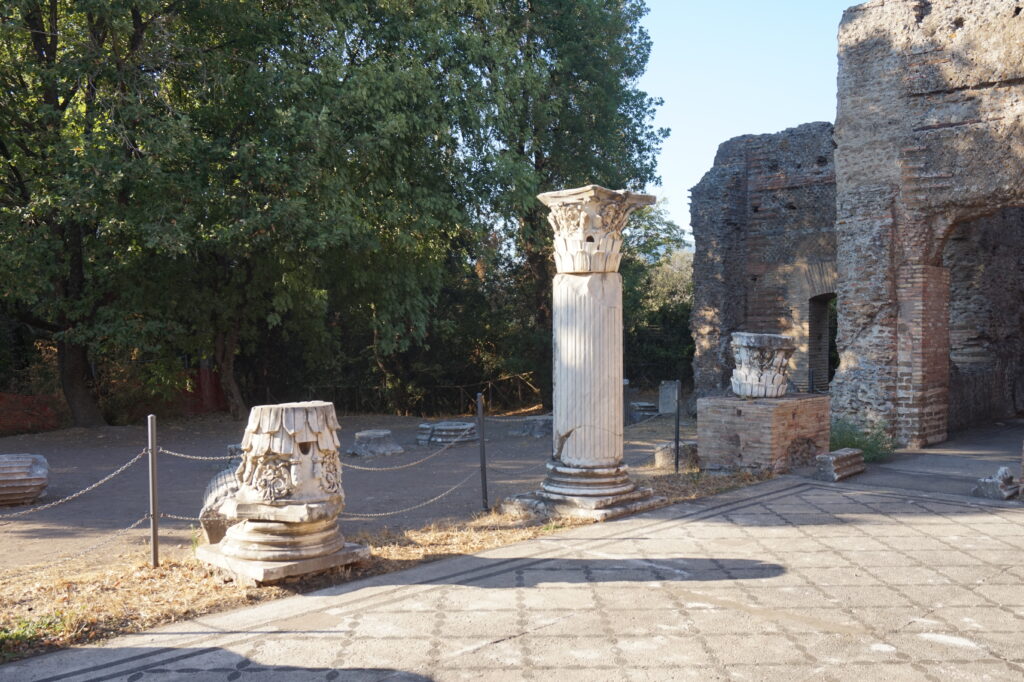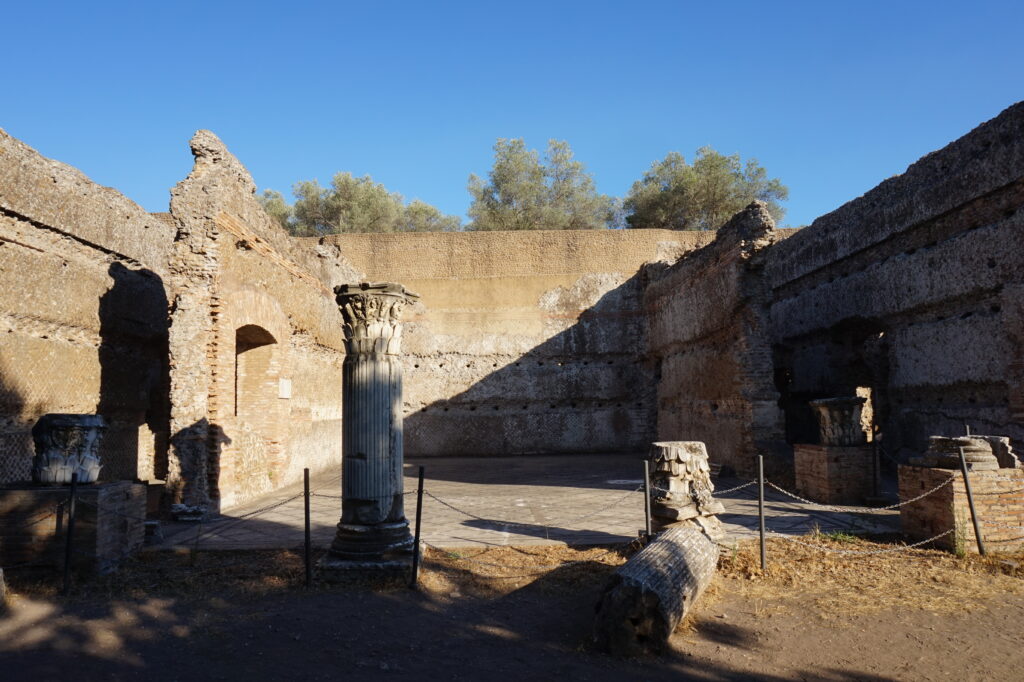When the opportunity arose, you made space in your agenda to visit Hadrian’s Villa. You booked a room for one night at Hotel Milo on Via Principe Amedeo next to the Roma Termini station so that you could get up early and catch the 2-euro regional Trenitalia to Bagni di Tivoli. Thirty-to-forty minutes east of Rome, Tivoli train station is a run-down off-the-track kind of place with peeling paint and a broken vending machine. A little red shuttle bus awaits travelers, mainly tourists but also Italians, to take you to Hadrian’s Villa. The fee is 1.5 euros in coins, so you have to negotiate with the driver who finally lets you get on for free since you only have debit and credit cards on you, and they don’t accept cards. It’s 10am when the bus turns into the empty parking lot and the sun is already beating down. There is a ticket booth and a gift shop with air-conditioning where on your way out you will get a copy of Meditations by Marcus Aurelius for 18.25 euros and ask the cashier to charge you 20 euros so you have some change to get the bus back to the station later. Then you pay the 12-euro entrance fee by card, get the map and push through the rotating bars to enter the grounds of the Villa Adriana.
You will end up walking around for 5 kilometers based on the Garmin tracking that beeps every kilometer. The sun is sweltering and sweat slips down your back. You hold the paper handout map of the villa up as a visor when walking around along the dusty dirt paths between the ancient olive trees past the prehistoric thumb-size lizards scurrying around the broken rocks. You will see the contour of your walk drawn on the Strava GPS map showing that you were here, weaving back and forth between the ruins, back-tracking, and going around to see the different buildings from different angles. The Maritime Theater and the Philosopher’s Hall. The Piccole Terme (Smaller Baths) that were private to Hadrian and his entourage. You missed that one at first and then looped back around to see the fragments of some sun mosaic on the floor. The Grandi Terme (Large Baths) for the soldiers, civil servants and visitors, with massive high-arched porticos and ceilings. The Temple of Venus, the Greek Theater, the Stadium Garden, the Fish-Pond building, Piazza d’Oro, Palazzo Imperiale, the Roccabruna, Pretorio, and the incredibly emerald-green water of the long rectangular pool called the Canopo Serapeo at the north-eastern most part of the property where people sit on wooden benches in the shades and statues of other people stand stoically in the sun without heads or arms or topless. An alligator statue sits by the water waiting. These majestic grounds bear testimony to the grandeur of the greatest Roman emperor.

You are here to find the hospital, but there is no hospital. Hospitalia – giving ‘hospitality’ – means ‘guest house’ or ‘guest quarters’ where visitors stayed to enjoy leisure time, not to be treated and perchance cured by doctors. The hospitalia “refers to an area of the villa reserved for the middle-ranking court entourage (for example, officers of the praetorian cohort, priests, etc.), as indicated by the multi-seated latrines in the northwest corner and the quality of the mosaic, which are inferior to those in spaces inhabited by the emperor.” The descriptive plaque goes on to describe that “this complex, built along one of the shorter sides of the Library Courtyard, features a wide corridor paved with a white mosaic floor with black crosses, onto which a double series of bedrooms (cubicula) open, each containing three recesses (alcoves) made to house the same number of beds. The ten rooms also contain mosaic floors with black and white tesserae, the central panels boasting more elaborate geometric and floral decorations than those covered by beds in the alcoves. It is probable that the building included a second storey, accessed by a staircase.”

